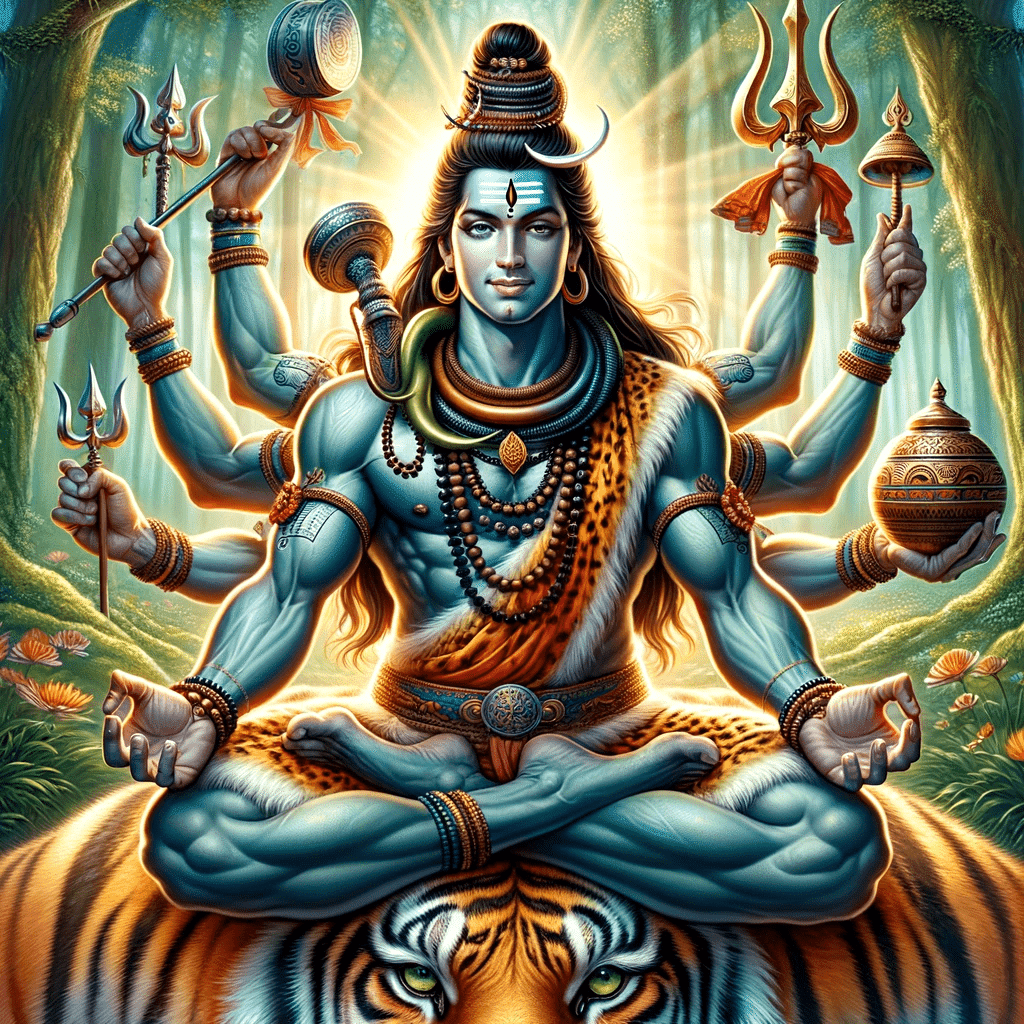
Shiva is the god destroyer, his matted hair and ash smeared face sit silent in meditation or flow eternally in his cosmic dance of death. From his matted hair flows from the Ganges river in India and he often adorns himself with snakes, particularly cobras. He lives far secluded from the other gods in his abode in Mount Kailash, which is a real mountain from which many of the rivers in Asia begin. It is on top of this mountain that the destroyer of ignorance, suffering, illusion, and sadness finds his eternal meditation with his wife Parvati and sons Ganesha and Kartikeya. He is a simple herdsmen and yogi at certain times with his family, and at others he slays demons to protect the equilibrium of the universe. He also wears a garland of skulls, to show his victory over death and holds a three forked trident to represent the meeting of three worlds, immediate, internal, and external.
Shiva is a powerful god that creates change through chaos and destruction. The symbols of Shiva are extremely powerful, they bring a stoic freedom to find peace in each moment knowing that someday the moments will end. He is a part of the Trimurti and makes way for Brahman to create through his destruction. Vishnu preserves the continuous cycle; some claim Vishnu as the primary deity, called Vashnavism, and some claim Shiva as the primary god, called Shaivism. Together, they complete the cosmic cycle of death, rebirth, and life. Shiva is the cosmic dancer, and often slays demons with his trident while playing the damaru. Shiva is also well-known for playing the flute.
The final pose in a yoga asana series or sequence is devoted to Shiva. In Ashtanga in particular, the final meditation is focused on the death of the individual and release from the cycle of Samsara. He is the patron god of yoga and is one of the primary focal points of the philosophical traditions. Death is undoubtedly the primary reason yoga is practiced, whether it is to ensure a long life, to improve health and vitality, or to find meaning in life. Yoga helps us to come to terms with our own mortality and know that one day, we will stop breathing. But in that cessation is the beauty of the unknown and the release from this world that grants freedom that is unequaled.
The next time you are in Shivasana, meditate on your own death. It is very powerful and drops me into a deeper Samadhi every time, minimizing distractions. There are also many powerful chants used before class to destroy obstacles and invoke the presence of the great transformer. If you have different ways of showing love for Shiva, or ways that you know Shiva to be different, let us know!
